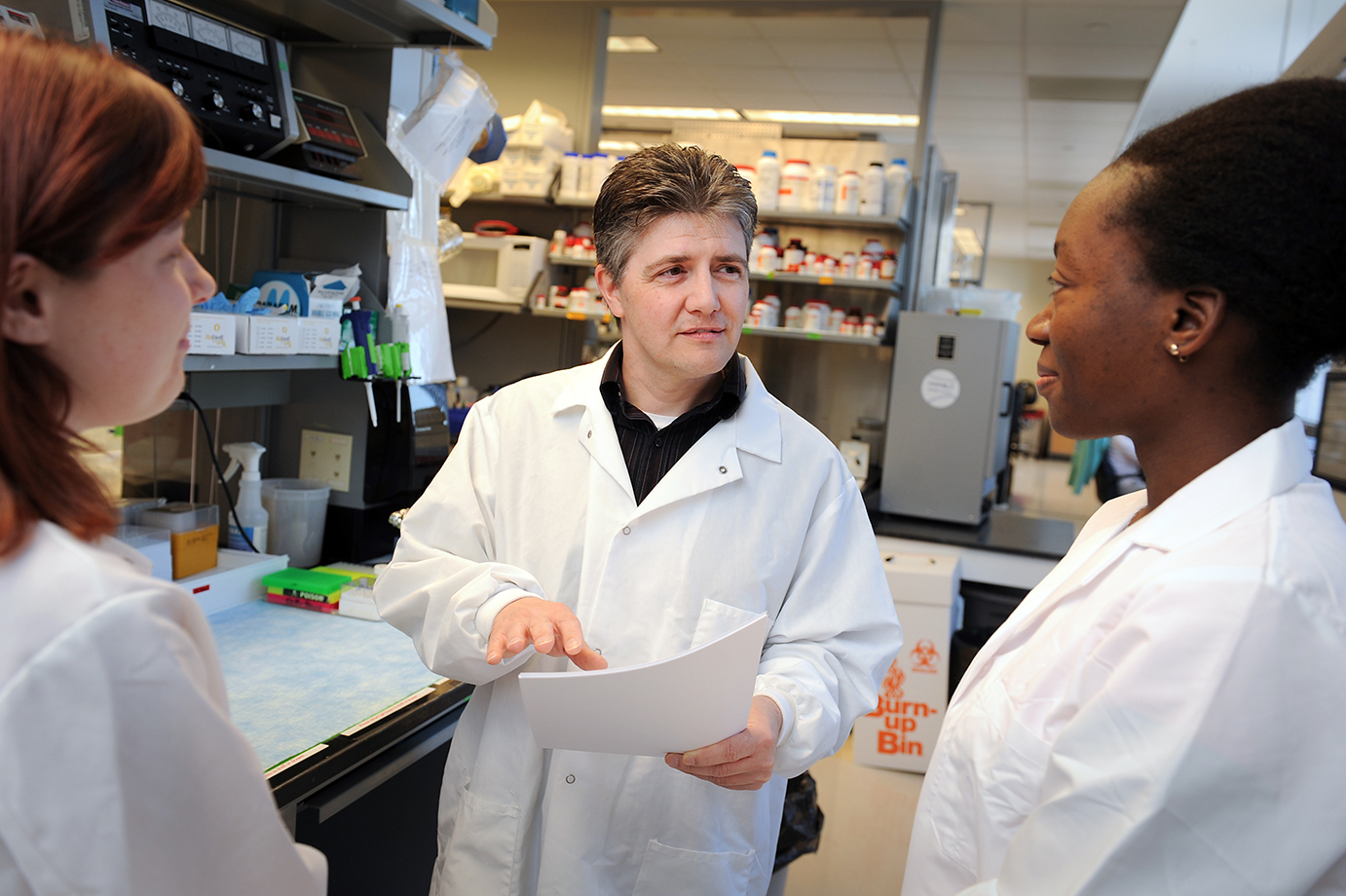Advances in Comparative Oncology

Here are some interesting numbers:
- $15 billion/ 15 years–estimated cost and time required to sequence and assemble the human genome in 2003.
- $40 million/ 1 year—estimated cost and time required to sequence and assemble the canine genome in 2005.
- $5,000-$10,000/ few months – estimated cost and time it takes to generate a full-length genome sequence today.
You do not have to be a professor of genomics to appreciate what these figures represent to advancing the field of comparative medicine research—but it helps.
“The development of the canine genome reference sequence 10 years ago provided the catalyst for numerous opportunities to advance comparative studies of dogs and humans,” says Matthew Breen, the Oscar J. Fletcher Distinguished Professor of Comparative Oncology Genetics at North Carolina State University’s College of Veterinary Medicine. “This has been especially evident in the field of comparative oncology, comparing cancer data from canine and human patients to identify shared features that may advance our understanding of cancer in both species.”
A member of an international team that decoded the canine genome in 2005, Dr. Breen, who also is a researcher with the NC State Comparative Medicine Institute, is recognized internationally for his research into molecular cytogenetics—the study of the structure and function of cells and chromosomes—and the comparative medicine application to canine and human cancers. “Usually in the first few minutes of one of my talks to human cancer researchers somebody will raise their hand and say, ‘I’m sorry, but you’re saying that dogs get cancer?’ The answer, of course, is yes,” says Breen, “Effectively, we and dogs are largely differential organizations of the same collection of ancestrally related genes.”
[one_half]The journal Nature Medicine published a feature article on the comparative oncologist’s current activities on Dec. 8—exactly 10 years to the day from when the journal Nature published the paper documenting the detailed analysis of the canine genome. [/one_half]
[one_half_last][document id=”135461″][/one_half_last]
Almost a decade ago, Breen, also showed that characteristic genetic changes in human leukemias were conserved in canine leukemias. Since that time his laboratory has continued to demonstrate this level of similarity to be the case across a variety of other cancers, suggesting there is a lot to be gained from this comparative approach.
“It is important to recognize that cancers in our pet dog are spontaneous diseases,” says Breen, who also is a member of the CVM Department of Molecular Biomedical Sciences. “Our pet dogs live in our homes. They breathe the same air as we, drink the same water, get on our beds and often eat the foods we eat. When we take them for a walk, they encounter the same herbicide, insecticide and pesticide treated grass that we and our children run across. Add to this shared environment the fact that the genome of the dog is 80 to 90 percent similar to that of people, and why wouldn’t dogs and people get the same kinds of cancer?”
“There are many challenges in our path to learning more about how to better detect, diagnose and treat cancers that affect both humans and dogs,” says Breen. “Comparative oncology offers a real opportunity to accelerate cancer gene discovery, identify new therapeutic targets, and also explore shared environmental associations. Our dogs have been by our side as loyal companions for many generations and we have turned to them again to help guide our research for improving our health as well as theirs.”
Watch a video of Breen’s presentation “The Role of Clinical Studies for Pets with Naturally Occurring Tumors in Translational Cancer Research” to a workshop meeting of the Institute of Medicine, a division of the National Academies of Sciences, Engineering, and Medicine.


